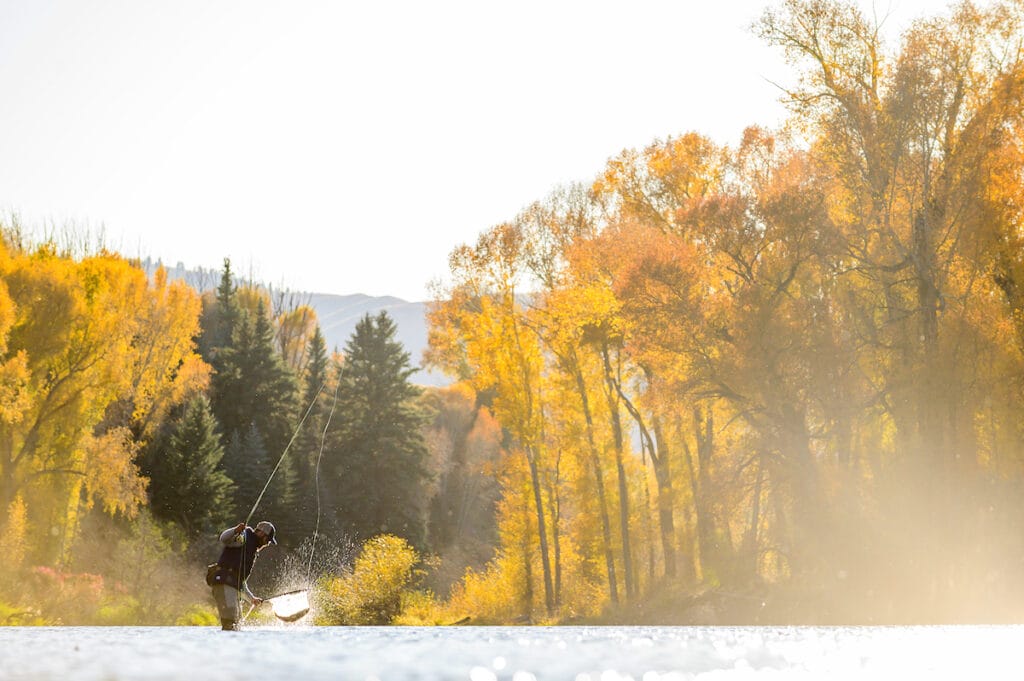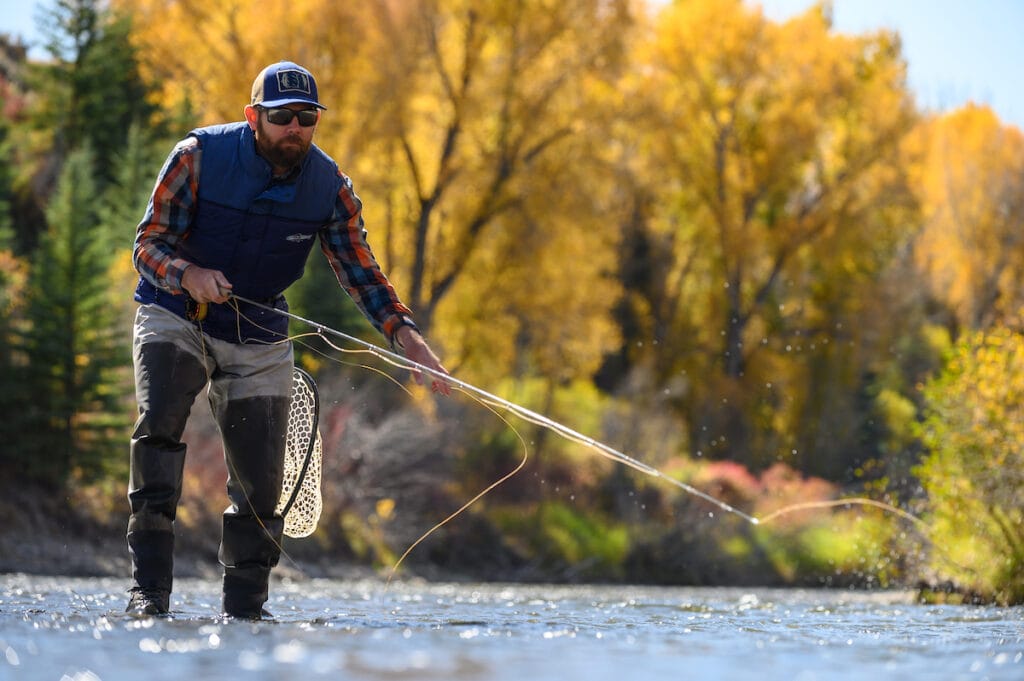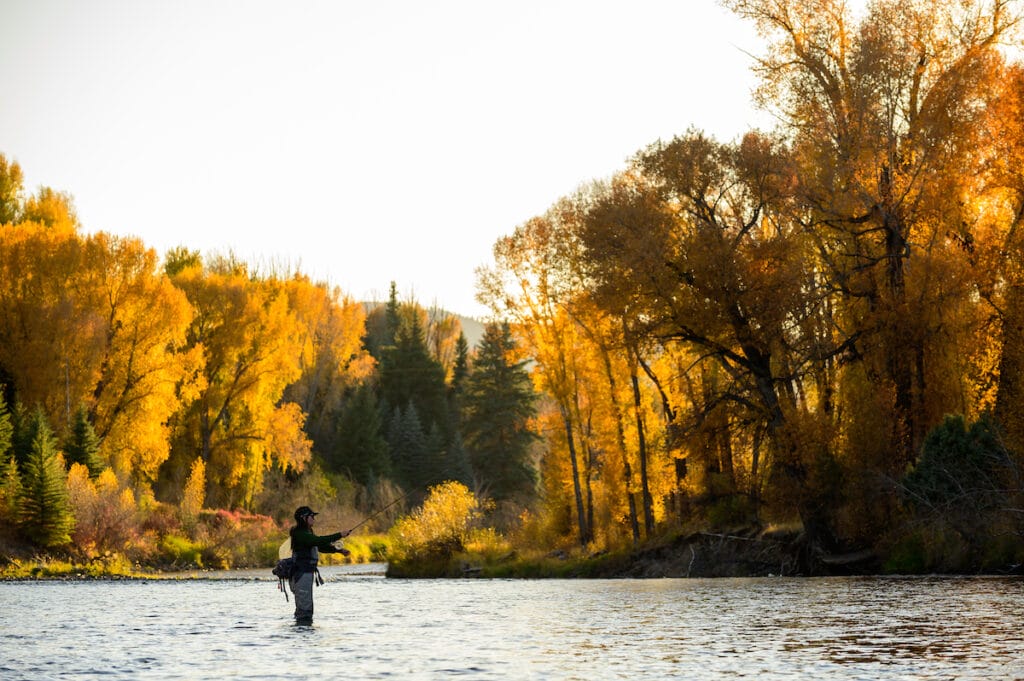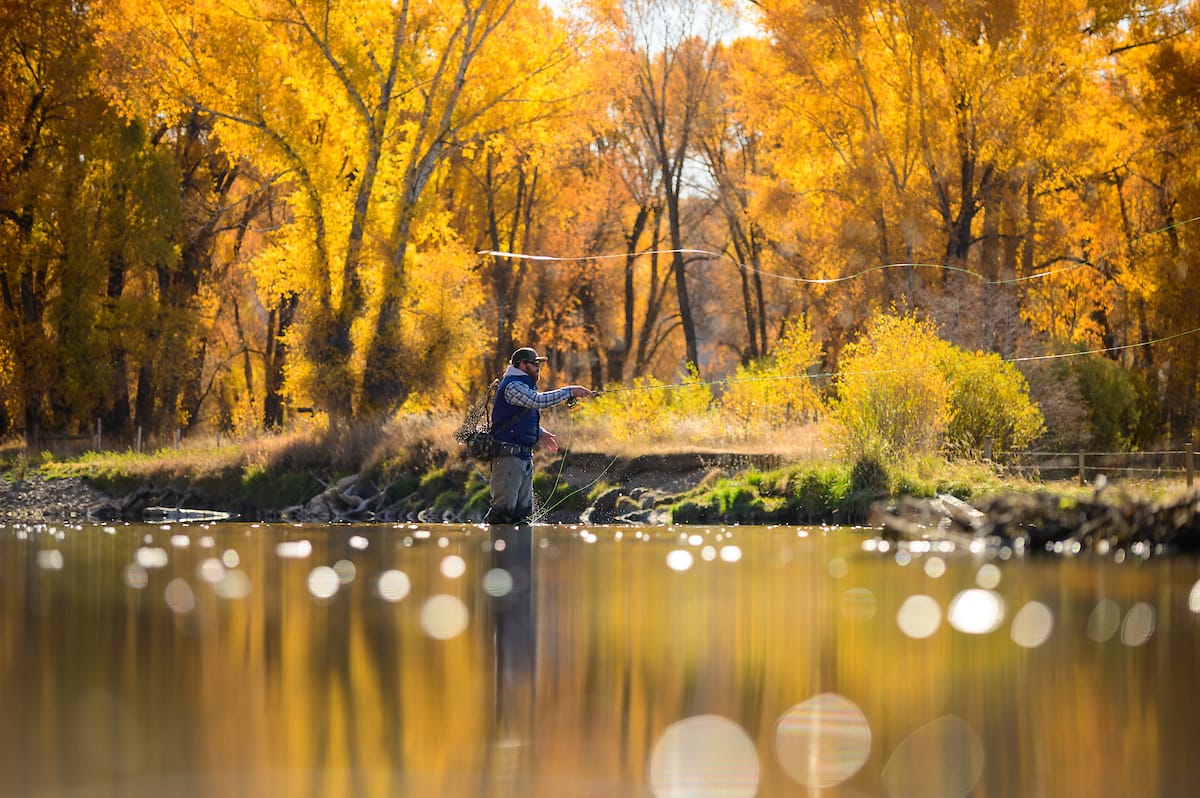Autumn leaves… blown off the trees… covering the river surface… kind of a bummer if you want to go dry-fly fishing, right?
Well, when life gives you lemons, make some lemonade. With fly fishing, there’s always an opportunity to learn something and practice.
This happened a week ago or so as I was fishing the legendary Battenkill River in Vermont with my good friends Shawn Combs of the Orvis Company and Justin Pickett of Gink & Gasoline.
It was a beautiful fall day, and the trees were in full color. But unfortunately for the fishing, a steady breeze was knocking the leaves off the sycamores and maples. We tried fishing streamers and turned a few fish that way, and I landed a nice brown on a nymph suspended below a grasshopper fly, but it was pretty slow going overall.

And we were really there to test out some fly rods.
So, I decided to cut off the flies. I found a wide spot in the river where I could really play with different casts. I got a feel for making loops and rolling off the surface, but I have a short attention span and started looking for more.
I saw a yellow leaf floating down the run in front of me and wound up to make a cast. But the leaf got sucked under the surface and disappeared. A few seconds later, it popped back up. I made a cast and draped the end of the leader right across the leaf, and thought, “Huh, kinda fun…”
As I watched more leaves floating down the river, it was clear that they’d ride on top for a bit (about four seconds) and then dip away for a while, then pop back up again. It was like “Whack-a-Mole” with a fly rod. And the more I started casting at leaves, missing some and hitting others, the more I realized this was valuable target practice that forced me to be decisive with my casts.

And after several minutes, I found a groove and started “willing” my casts at the moving targets.
Now, granted, most dry-fly trout fishing casts should be carefully measured and patience is a virtue. Precise dry fly fishing is seldom a game of rapid fire at moving targets.
But, that said, if you can get pretty reliable at hitting targets within 40 feet or so—within about a four-second window—you’re probably going to have more confidence when it’s time to make that cast at a trout sipping baetis flies just upstream of you and you have seemingly all the time in the world. It’s a bit like shooting sporting clays (clay pigeons thrown in various odd ways to simulate different hunting situations for shotgunners).

Once, while writing for Field & Stream, I got to hang out with Kevin Van Dam, Mike Iaconelli, Gary Klein and some other professional bass anglers in a place that had a clay-pigeon thrower, and everyone tried to break a target by throwing a heavy lure with a baitcaster. Nobody broke any targets, but it was fun trying. If you scour the Internet, you’ll surely find someone who did pull it off.
As for me, I’ll stick with floating leaves and a fly rod on windy autumn days when the fish aren’t rising and my attention span shrinks. That might just make me a better caster, and I need all the help I can get.



